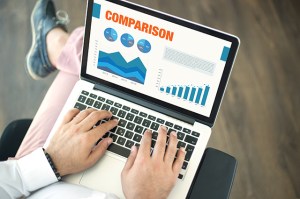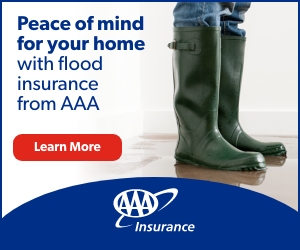Whether you’re buying a house or car, going to college or simply charging expenses to your credit card, being in debt is one thing just about everyone can relate to. Total debt in the United States surpassed $14 trillion in 2020, according to the Federal Reserve Bank of New York, with the average household accumulating nearly $100,000 in debt.
But not all debt is created equal. In fact, some types of debt can be viewed as investments that will benefit your long-term financial outlook. Other forms of debt, however, can be dangerously problematic. Here’s a breakdown of the most common types of good and bad debt.
What is Good Debt?
While there is no hard and fast definition of good debt, it is generally considered to be any debt that helps you increase your income or net worth. Furthermore, most examples of good debt also fall under the category of installment debt, in which the borrower is forced to pay the debt down in fixed amounts over a defined period of time, greatly reducing the risk of financial disaster.
Student Loans
The cost of college tuition has skyrocketed over the years, meaning nearly all students wanting to get an advanced degree will have to go into debt by taking out student loans. But there is a direct relationship between education level and both median income and unemployment rate. Therefore, student loans can be viewed as an investment in your future, increasing the likelihood that you land a well-paying job.
Another advantage of student loans is that they generally have lower interest rates, particularly if they are federal loans. This makes them easier to pay off.
Whether taking out a new loan, consolidating or refinancing, AAA has all your student loan needs covered.
Mortgages
There may be no better type of debt to own than a mortgage. Unlike many other purchases and expenses, housing is a necessity. If you choose to rent, you’ll be paying money that you’ll never recoup. The beauty of buying a house, however, is that it forces you to save money. Each monthly mortgage payment you make increases the amount of equity you own in your house. Once your mortgage is paid off, the full value of your home belongs to you.
Not only do you then own a very valuable asset (thus increasing your net worth), real estate values usually increase each year, meaning you’re making money without even doing anything. If you choose to sell your house down the road, you’ll likely be making a profit.
In the market for a new home? Learn more about our low-rate mortgages.
Home Equity Loans
The value of your home will increase over time even if the property is left alone. A few home improvements projects will bump that number up even more. This is where home equity loans come into play. If you need to borrow money to complete these projects, and the increase in home value is greater than the total cost of the loan, you can file that home equity loan under good debt.
Home equity loans can often come with low interest rates and the interest you do pay on them may be tax deductible.
Car Loans
Car loans tend to straddle the line between good and bad debt, as car ownership, from a financial aspect, has both pros and cons. Opposed to homes, which gain value over time, new cars lose value from the minute you drive one off the lot.
That being said, cars are a necessity for most people, needed to, amongst other things, get them to work where they can earn a living. In order to make a car loan as “good” as possible, find one with favorable terms, including a low interest rate.
AAA can get you get behind the wheel of a new car or refinance the one you already have. Learn more about our Auto Buying Program and low-rate Auto Loans.

What is Bad Debt?
Bad debt not only puts you in the hole for your immediate future, it also offers no redeeming qualities, such as increasing your income or net worth. Furthermore, it can often cause your debt totals to spiral out of control. Here are some types of bad debt to look out for.
Credit Card
What mortgages are to good debt, credit cards are to bad debt. Credit card debt doesn’t help your long-term financial outlook and, even worse, it can cause your debt totals to spiral out of control. Credit card debt is the prime example of what’s known as revolving debt, in which there is no predefined repayment plan and minimum payments change as you pay off your debt or add to it.
Credit cards offer an easy way to pay for things. But consumers pay for that convenience in the form of extremely high-interest rates. The average credit card is more than 16%, according to CreditCards.com. This means that even a small amount of debt can grow to a significant amount in a short period of time. This significantly increases the total amount of debt you owe and makes getting even on your debt all that more difficult.
High-Interest Loans
Piggybacking off credit card debt, any loan with a high-interest rate can be labeled as bad debt and should be avoided. It can be very difficult to catch up with your payments if you fall behind on these types of loans, putting you in a worse financial position than you began. A prime example of this is payday loans, which provide short-term cash you’re required to repay by your next paycheck, usually within a week or two. However, payday loans can have interests rates as high as 400%. If you’re late on your repayment, it’s a very slippery slope into a massive hole of debt.
Learn about all the ways AAA and Discover can help you handle your financial needs.
5 Thoughts on “Good Debt vs. Bad Debt”
Leave A Comment
Comments are subject to moderation and may or may not be published at the editor’s discretion. Only comments that are relevant to the article and add value to the Your AAA community will be considered. Comments may be edited for clarity and length.


















I noted that under “Good Debt” you stated borrowers were FORCED in making regularly scheduled payments of principal and interest. Regular payments are generally required and the borrower must learn to plan and pay on time. In one sense, this helps the consumer manage their finances properly while at the same time guides them from entering into debt situations beyond their control. Many times these debt repayment schedules negotiated schedules so the borrower has some.latitude in deciding if it is affordable and all that is part of the lender’s decision process. But with any discresssionary borrowing the real questions are: Do I really need this? And Can I reasonably comfortably make the required payments? Tough questions to answer honestly.
This article seems a bit careless. It spins student loans as entirely positive and low interest rate loans. Unfortunately government loans are not necessarily low interest rate – some graduate school loans have 7+ % interest and have resulted in six figure debt that has actually hurt many people and their finances. It helps many too but there is a student loan crisis in the US and needs to be a careful decision.
Also, home values do increase over time and that has been the trend but let’s not forget 2008 and how it
Parent Plus loans are a form of Student loans. The interest on these loans is outrageous. It’s hard to pay these off plus save for your retirement. With all the talk of Student Loan forgiveness are the Parent Loans included?
Hi Carol, thanks for the question. Here’s what our senior manager of student loans has to say: It all depends on the specifics of the loan forgiveness program so it is difficult to say for 100%, but PLUS loans are federal loans so, in general, yes they would be eligible. But the devil is always in the details, which we do not know yet. For example, it certainly could include the PLUS if the forgiveness is per borrower, but if the forgiveness is per student then it might not.
As an aside, you could refinance the PLUS loan to a lower interest rate, but you would lose out on any potential forgiveness that may happen.
Also, PLUS loans have some forgiveness programs now, not as much as the federal student loans but they do have death and permanent disability forgiveness, income contingent forgiveness after 25 years of payments and if the loans are consolidated they could get public service forgiveness as well.
While I agree that most credit card debt is bad debt, I have always thought 0% interest cards should be listed separately. For example, my PayPal card has no interest if you pay off the purchase balance within 6-12 months. If there is credit available it would be stupid not to use it. It’s basically a free loan.